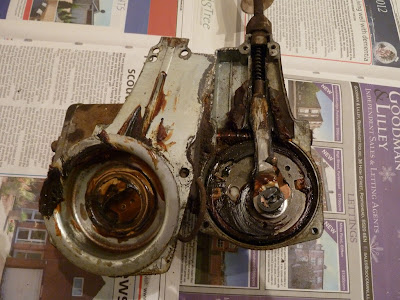Follow my project of restoring a 1965 MK II MG Midget classic car. This will be a complete rebuild restoration.
Wednesday 14 December 2022
Windscreen Wipers
Friday 18 November 2022
Carburettors Rebuild
When I first started to clean the carbs back in December 2012 they were totally junked up and looked in a right state.
Once I did get them all cleaned up they've sat in a box waiting for the right time. And that time was now!
Before I could start putting it all back together I needed some new parts. The jets and the jet bearings were pitted and worn. The throttle return springs were rusting away. So I placed another order.
Once that order arrived I wanted to test fit the carbs to make sure I knew what I was doing, but also get more familiar with them as I knew tuning the carbs it very important to achieving a smooth running engine.
I had already attached the exhaust manifold covered in this post: Exhaust System Fitting
I then want to check over the float valves having previously cleaned out the bowls I knew they needed attention.
Depending on how she runs I'll invest in new valves at some point in the near future.
Next up was fitting the throttle cable. My old one was destined for the bin!
Before I could try starting I had to set up the carbs with all the adjustments which I will cover in this post:





























































